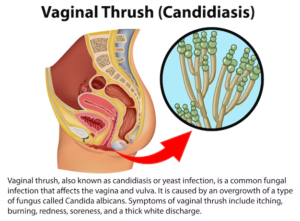Understanding Flatulence: Ayurvedic Approaches to Relief
Understanding Flatulence: Ayurvedic Approaches to Relief, often considered a taboo subject, is a common condition that can cause discomfort and embarrassment. While it’s a natural bodily function, excessive gas can lead to significant distress. In Ayurveda, an ancient Indian system of medicine, the focus is on balancing the body, mind, and spirit to promote overall health. This blog explores flatulence from an Ayurvedic perspective, offering insights into its causes, effects, and holistic treatments.
What is Flatulence?

Flatulence refers to the accumulation of gas in the digestive tract, which is released through the rectum. While everyone experiences gas, the frequency and volume can vary significantly among individuals. Common symptoms of excessive flatulence include bloating, abdominal pain, and a sense of fullness. Understanding the root cause is essential for effective treatment.
The Ayurvedic Perspective
In Ayurveda, flatulence is typically linked to an imbalance in the body’s doshas—Vata, Pitta, and Kapha. Each dosha represents a combination of elements and governs various physiological and psychological functions.
- Vata Dosha: Comprised of air and ether, Vata is responsible for movement and is primarily involved in digestion. An imbalance in Vata can lead to the production of excess gas.
- Pitta Dosha: Made up of fire and water, Pitta governs digestion and metabolism. An imbalance can lead to issues like heartburn and acid reflux, which can be associated with gas.
- Kapha Dosha: Comprising earth and water, Kapha is linked to stability and structure. An excess can result in sluggish digestion and bloating.
Causes of Flatulence in Ayurveda
From an Ayurvedic standpoint, flatulence can result from several factors, including:
- Dietary Choices: Consuming gas-producing foods such as beans, lentils, carbonated drinks, and cruciferous vegetables (like broccoli and cauliflower) can lead to increased flatulence.
- Eating Habits: Eating too quickly, talking while eating, and consuming food when stressed can disrupt digestion, resulting in gas.
- Impaired Digestion (Agni): A weak digestive fire (Agni) can lead to improper digestion of food, resulting in fermentation and gas production.
- Lifestyle Factors: Sedentary lifestyles and lack of physical activity can slow down digestion and lead to bloating and gas.
- Emotional Factors: Stress and anxiety can disrupt the digestive process, leading to symptoms like flatulence.
Ayurvedic Treatments for Flatulence
Ayurveda offers a variety of treatments for flatulence that focus on restoring balance and promoting healthy digestion. Here are some effective strategies:
1. Dietary Modifications
- Avoid Gas-Producing Foods: Limit intake of beans, lentils, dairy products, carbonated beverages, and certain vegetables.
- Include Digestive Aids: Incorporate spices like ginger, cumin, coriander, and fennel into your meals, as they can enhance digestion and reduce gas.
- Eat Warm, Cooked Foods: Cooking food enhances digestibility. Eating warm meals can also support digestive fire (Agni).
- Practice Mindful Eating: Chew food thoroughly and eat slowly to aid digestion and minimize air swallowing.
2. Herbal Remedies
Ayurveda utilizes various herbs to alleviate flatulence:
- Ginger (Zingiber officinale): Known for its carminative properties, ginger can help reduce gas formation and improve digestion. It can be consumed as tea or added to meals.
- Fennel Seeds (Foeniculum vulgare): Fennel is commonly used to treat digestive issues, including gas. Chewing fennel seeds after meals can provide relief.
- Cumin Seeds (Cuminum cyminum): Cumin aids digestion and can be added to dishes or taken as tea to alleviate gas.
- Peppermint (Mentha piperita): Peppermint tea can soothe the digestive tract and help relieve bloating and discomfort.
3. Lifestyle Adjustments
- Regular Exercise: Engage in physical activities like yoga or walking to stimulate digestion and reduce bloating.
- Practice Stress Management: Techniques like meditation, deep breathing, and yoga can help alleviate stress, improving overall digestive health.
- Stay Hydrated: Drink plenty of water throughout the day to support digestion and prevent constipation, which can contribute to gas.
4. Yoga and Breathing Exercises
Yoga can significantly aid digestion and reduce flatulence:
- Pavanamuktasana (Wind-Relieving Pose): This pose specifically targets gas relief. Lie on your back, bring your knees to your chest, and hug them while breathing deeply.
- Vajrasana (Thunderbolt Pose): Sitting on your heels after a meal can enhance digestion and reduce gas.
- Pranayama (Breathing Exercises): Practices like Kapalabhati (Skull Shining Breath) can help expel trapped gas and improve overall digestive health.
5. Consultation with an Ayurvedic Practitioner
If flatulence persists, consulting with an Ayurvedic practitioner can provide personalized treatment plans. They may recommend specific herbs, dietary adjustments, and lifestyle changes tailored to your unique constitution (Prakriti) and current state of health (Vikriti).
Conclusion
Flatulence may be a common issue, but it can be managed effectively through Ayurvedic practices that emphasize balance and holistic well-being. By understanding the root causes and adopting dietary and lifestyle changes, individuals can experience relief from discomfort. Incorporating herbal remedies, practicing mindful eating, and engaging in regular physical activity can significantly enhance digestive health.
As with any health concern, it’s essential to listen to your body and seek professional guidance if symptoms persist. Embracing the wisdom of Ayurveda can empower individuals to take charge of their health and well-being, leading to a happier, more comfortable life.
By exploring the Ayurvedic approach to flatulence, we can gain valuable insights into managing digestive health while fostering a deeper connection to our bodies. Whether through diet, herbal remedies, or lifestyle changes, Ayurveda offers a comprehensive framework for achieving balance and harmony.








Leave a reply